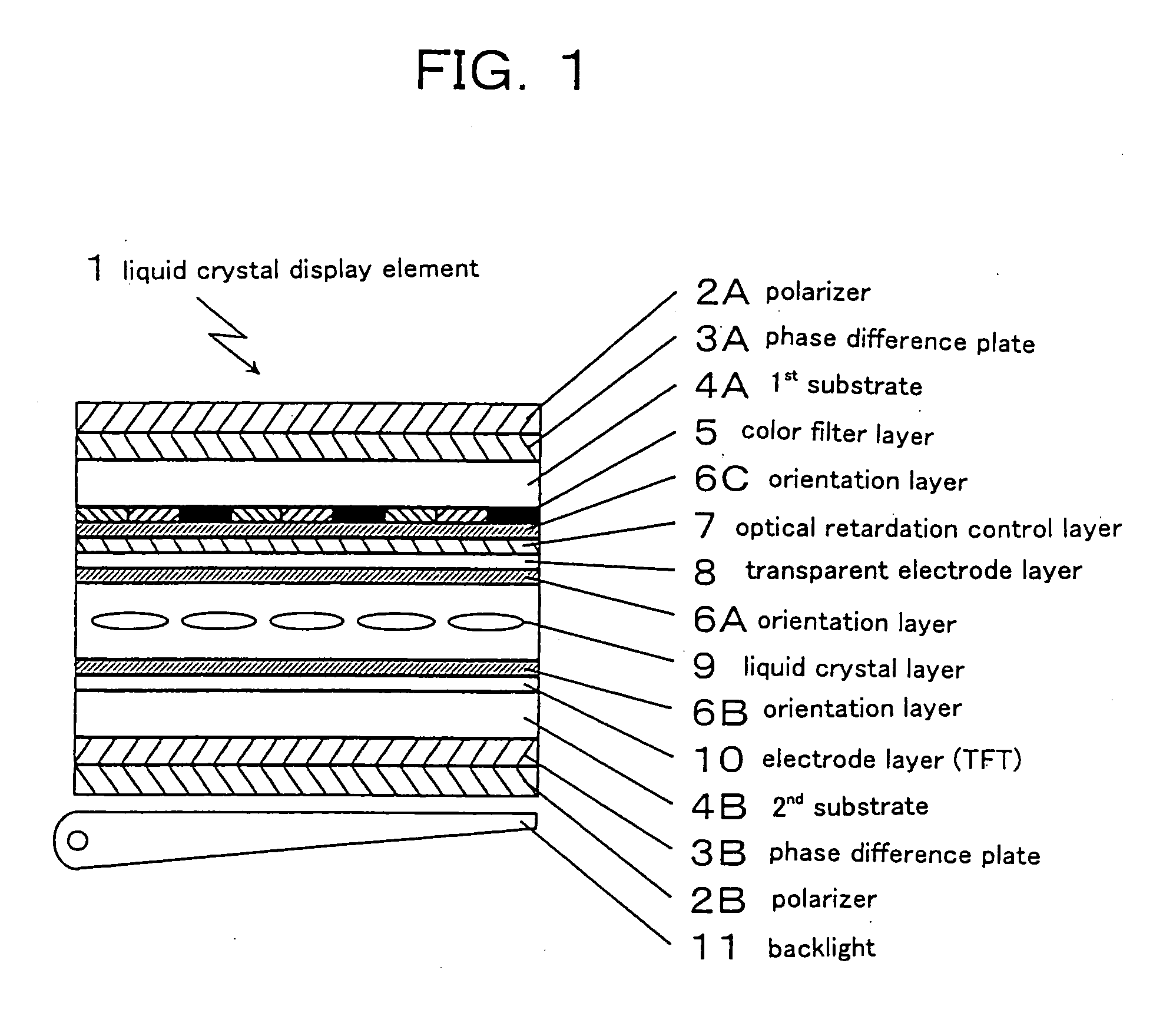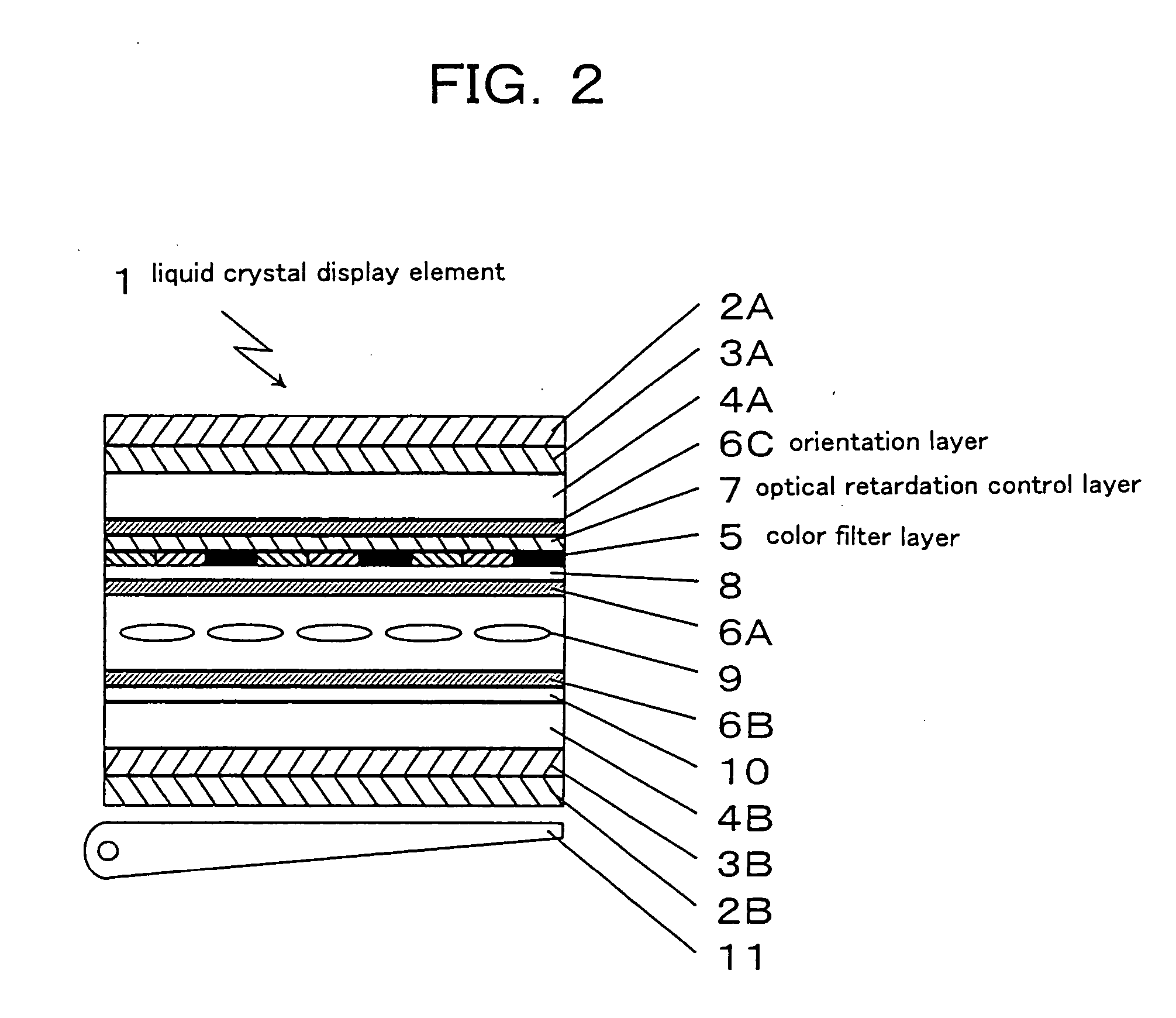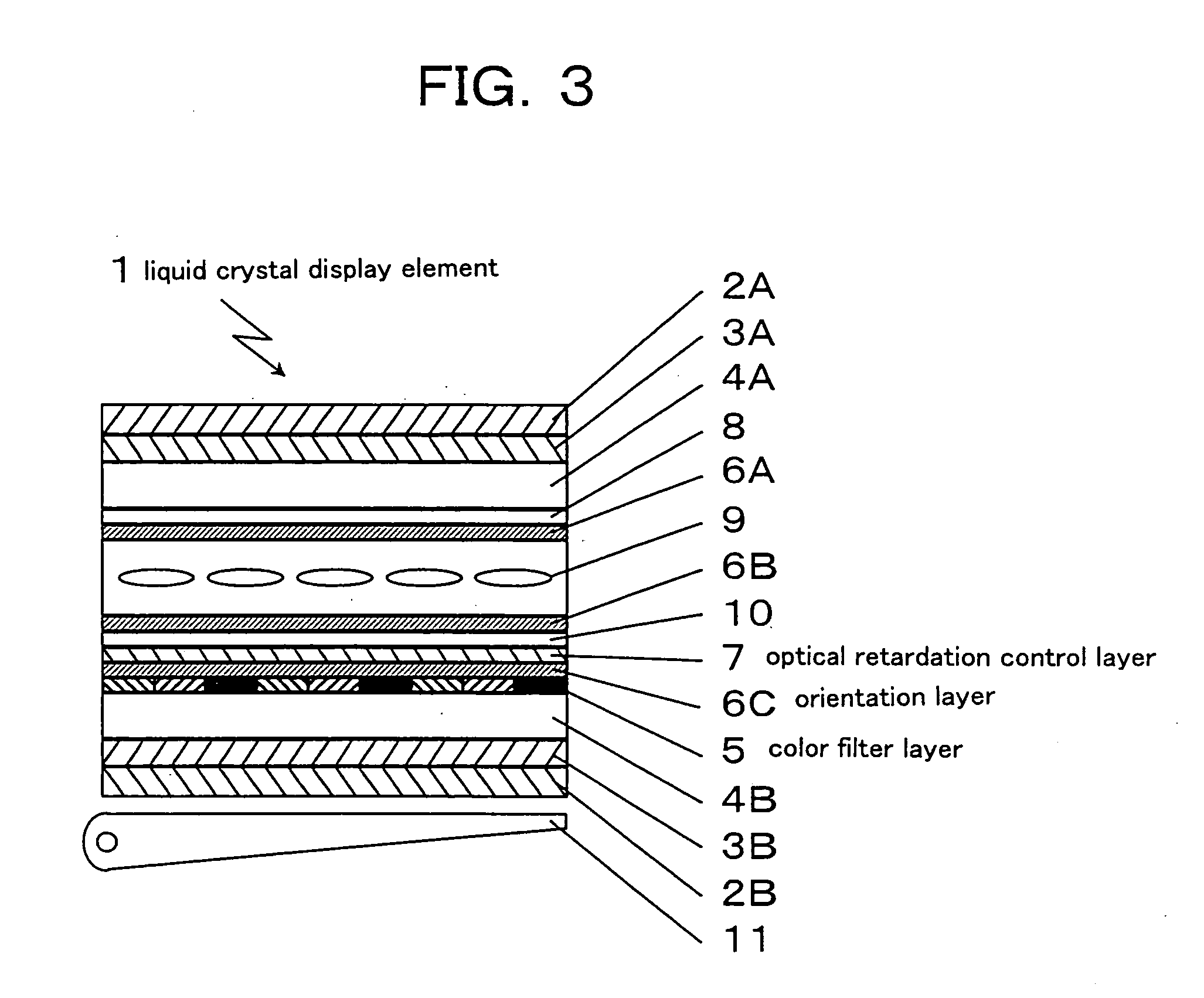Optically functional layer, method of forming optically functional layer, and liquid crystal display element
a technology liquid crystal displays, which is applied in the direction of polarizing elements, instruments, transportation and packaging, etc., can solve the problems of insufficient heat resistance of optically functional layers obtained by using any of the above photopolymerization initiators, risk of deteriorating a display quality level, and insufficient chemical resistance, so as to improve the orientation of layers and reduce the risk of deterioration , the effect of heat resistan
- Summary
- Abstract
- Description
- Claims
- Application Information
AI Technical Summary
Benefits of technology
Problems solved by technology
Method used
Image
Examples
example 1
[0080] As composition for forming retardation layer, each component of the following composition was mixed and solved to prepare and used for spin coating on a glass substrate with an orientation layer having rubbing treatment. After removing a solvent, the coating layer after orientation treatment was subject to ultraviolet irradiation for photopolymerization at room temperature in the air with the use of ultra-high-pressure mercury-vapor lamp (output: 20 mW / cm2, wavelength: 365 nm) under the condition of radiating amount of 1000 mJ / cm2. As the result, the thickness of the obtained retardation layer was 1.03 μm, and retardation was 143 nm measured with a colorimetric light at wavelength of 589 nm.
[0081] Further, the obtained retardation layer was subject to curing treatment in a clean oven under condition of temperature of 230° C. and time of 1 hour, a retardation layer having slow axes in in-plain direction of layer was obtained. The thickness of the retardation layer after the c...
example 2
[0083] Except that a photopolymerization initiator represented by the Formula (2) was used as a photopolymerization initiator, a retardation layer was obtained with the compounding ratio of the composition for forming a retardation layer and the forming condition or the like similar to Example 1. The thickness of the obtained retardation layer after photopolymerization by ultraviolet irradiation was 1.02 μm and retardation was 132 nm when measured with a colorimetric light at wavelength of 589 nm.
[0084] The obtained retardation layer was further subject to curing treatment in a clean oven under condition of temperature of 230° C. and time of 1 hour, and a retardation layer having slow axes in in-plain direction of layer was obtained. The thickness of the retardation layer after curing treatment was 0.96 μm, and retardation was 119 nm when measured with a colorimetric light at wavelength of 589 nm.
example 3
[0085] Except that the coating layer after orientation treatment was subject to ultraviolet irradiation at 60° C. and photopolymerization, a retardation layer was obtained similarly as in Example 2. The thickness of the retardation layer obtained by photopolymerization by ultraviolet irradiation was 1.05 μm, and retardation was 122 nm when measured with a colorimetric light at wavelength of 589 nm.
[0086] The obtained retardation layer was further subject to curing treatment in a clean oven under condition of temperature of 230° C. and time of 1 hour. The thickness of the retardation layer was 1.03 μm, and retardation was 119 nm when measured with a colorimetric light at wavelength of 589 nm. The difference between the measured value and the retardation value after photopolymerization was small.
PUM
| Property | Measurement | Unit |
|---|---|---|
| selective reflection wavelength | aaaaa | aaaaa |
| thickness | aaaaa | aaaaa |
| thickness | aaaaa | aaaaa |
Abstract
Description
Claims
Application Information
 Login to View More
Login to View More - R&D
- Intellectual Property
- Life Sciences
- Materials
- Tech Scout
- Unparalleled Data Quality
- Higher Quality Content
- 60% Fewer Hallucinations
Browse by: Latest US Patents, China's latest patents, Technical Efficacy Thesaurus, Application Domain, Technology Topic, Popular Technical Reports.
© 2025 PatSnap. All rights reserved.Legal|Privacy policy|Modern Slavery Act Transparency Statement|Sitemap|About US| Contact US: help@patsnap.com



